Wondermondo 🢖 World 🢖 Wonders of South America 🢖 Wonders of Bolivia
Territory
Wonders of Bolivia
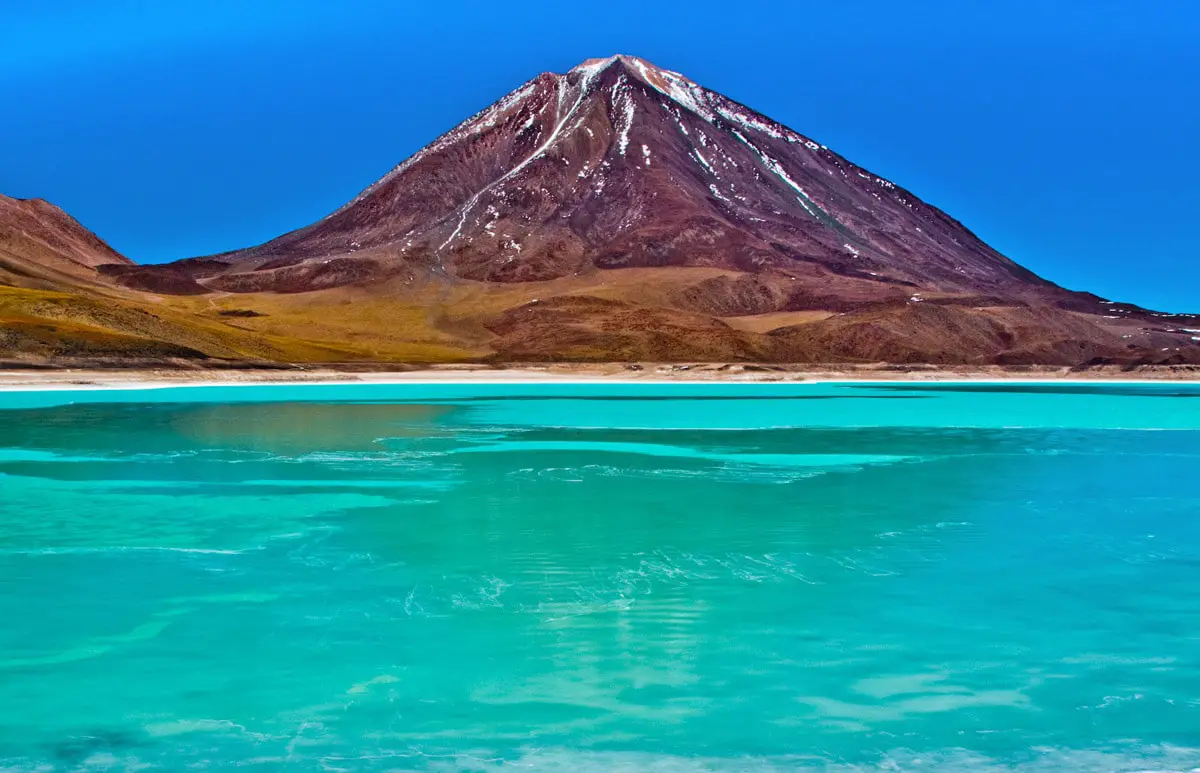
 Highlights
Highlights
Bolivia IS full of unexpected, pleasant surprises!
This country has an amazing natural diversity – from highland deserts and snow-capped mountains to wast lowlands covered with tropical forest. Here are found all kinds of landmarks. Many wonders of Bolivia still are waiting for their discovery.
The most interesting wonders could be:
- Archaeological monuments – Bolivia is a home of several exciting ancient cultures, including the great Tiwanaku civilization, here are located some of the most important Inca sites, as well as sites of many other known and unknown cultures.
- Historical churches and monasteries. True wonders are the churches in the old Jesuit Missions in Santa Cruz department – a few centuries ago here met the artistic traditions of local people and Europeans and the result is brilliant. Not less stunning is the portal of San Lorenzo de Carangas Church in Potosí.
- Landscape and living nature of plateaus in eastern Santa Cruz – endless forest filled with hundreds of species of orchids and other flowers, with incredibly tall, vertical cliffs rising up in the clouds, magnificent waterfalls and countless archaeological monuments waiting for their explorers.
- Volcanic plateaus with salt lakes in Oruro and Potosí – some of the tallest volcanoes in the world with geothermal fields, the largest salt flats in the world with the otherworldly landscape, lakes in various colors, and geysers.
Map with the described wonders of Bolivia
If you see this after your page is loaded completely, leafletJS files are missing.
 Top 25 wonders of Bolivia
Top 25 wonders of Bolivia
Geological wonders
Laguna Colorada
Potosí
Shallow salt lake with interesting geology. The water of the lake is colored by algae in red and orange colors. In the lake have formed borax islands in white color. Here live the rare James’s flamingos (Phoenicoparrus jamesi) – this is the highest habitat of flamingos.
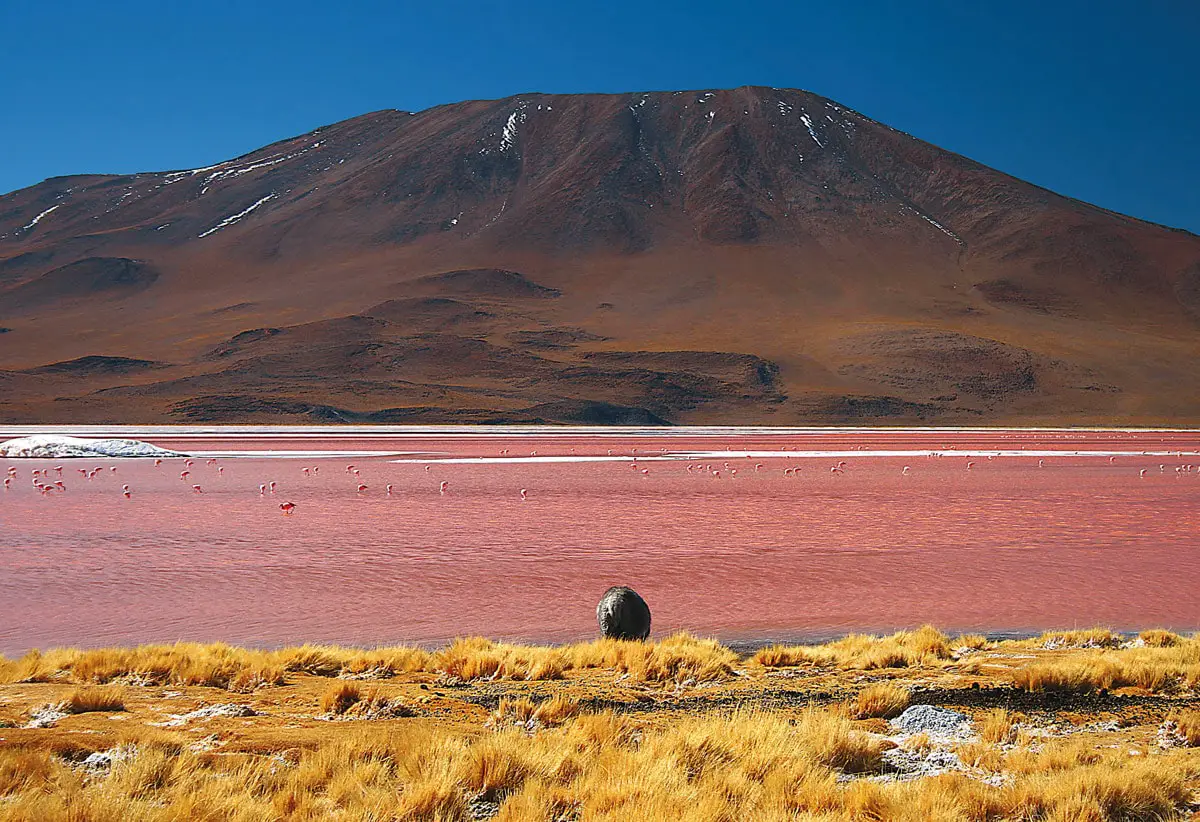
Sol de Mañana
Potosí
This visually impressive field of sulfur springs contains pools with boiling mud. Some abandoned boreholes emit pressurized steam up to 50 m high.
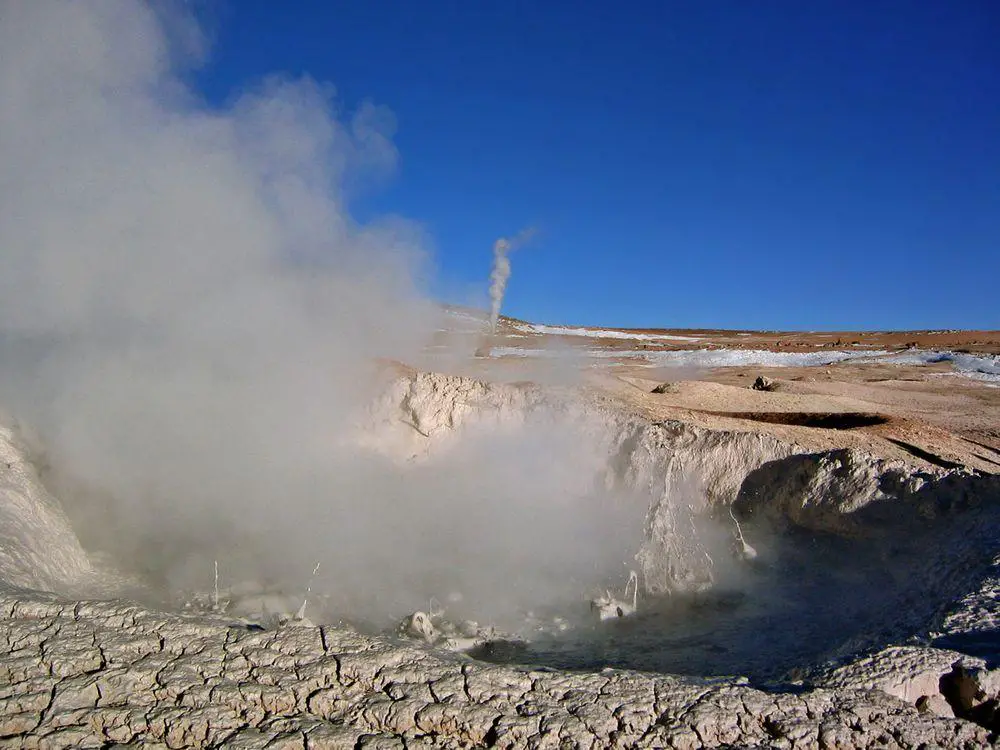
Toro Toro Canyon
Potosí
Magnificent, up to 300 m deep canyon. The area is rich with interesting attractions including caves, cave paintings, prehistoric Quechua ruins, and fossils (dinosaur trails and turtle cemetery).
Árbol de Piedra
Potosí
Amazing cliff formation – a mushroom/tree formed rock in the desert, standing on a thin “foot”.
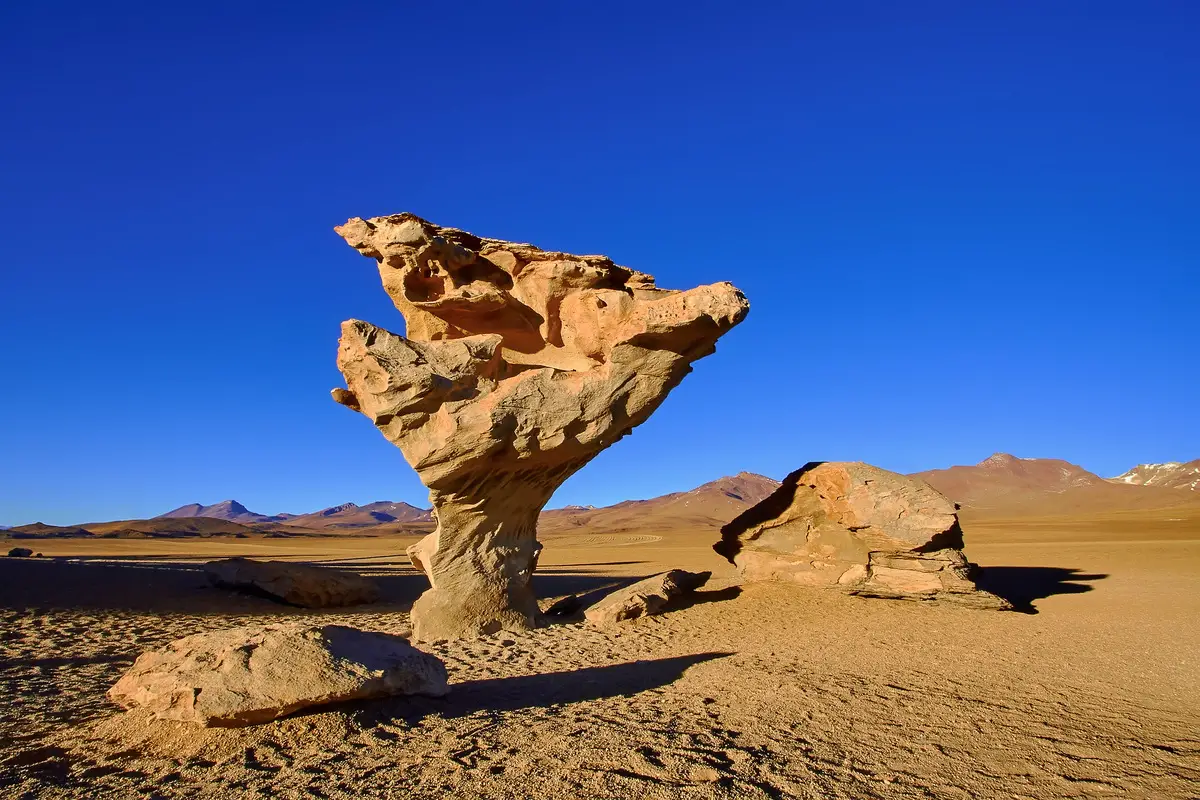
Valle de Tucuvaca
Santa Cruz (Bolivia)
Visually impressive landscape with amazing cliff formations – natural arches and caves. One of the best-preserved stands of the Chiquitano dry forest, with numerous rare species of plants including numerous species of bright flowering trees and orchids.
Arcoiris Falls
Santa Cruz (Bolivia)
Magnificent, 88 m tall, and approximately 50 m wide waterfall, located in a dramatic and pristine natural setting in Noel Kampff National Park, on the rim of the exotic tableland.
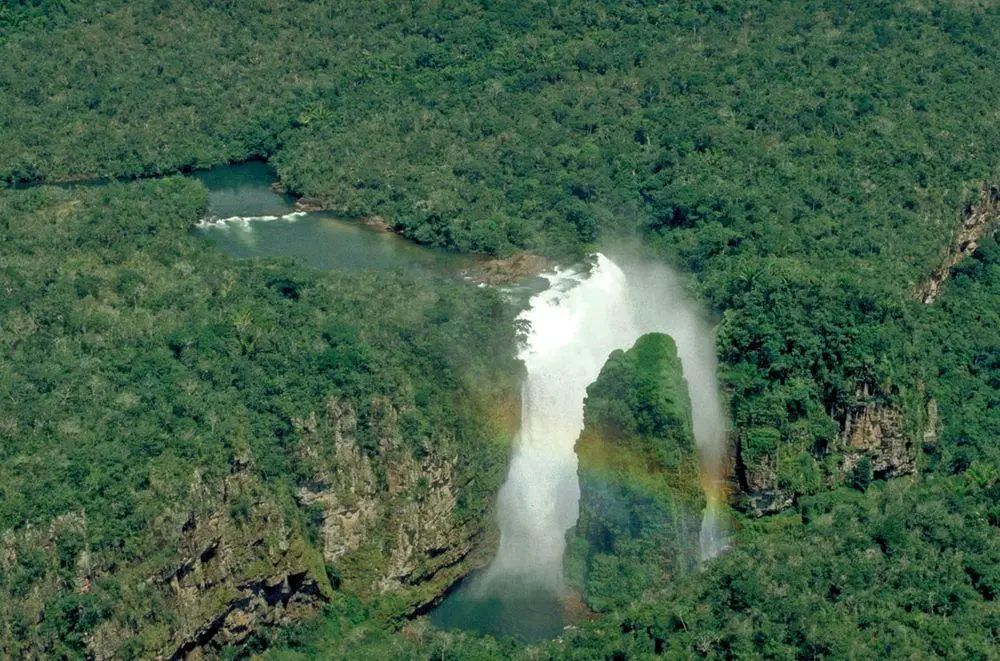
Biological wonders
Incahuasi Island (Fish Island)
Potosí
Unusual monument of nature – stony island (25 ha) in the middle of Salar de Uyuni – the largest salt flat in the world. The island is covered with a grove of gigantic cacti Echinopsis atacamensis ssp. pasacana, which together with the surrounding unusual landscape creates eerie sight. Similar groves of cacti are on other nearby islands as well, f.e. Isla del Pescado.
Nevado Sajama queñua forests
Oruro
Stands of queñua (Polylepis tomentella) trees growing up to 5,000 m altitude. This might be the record altitude for trees.
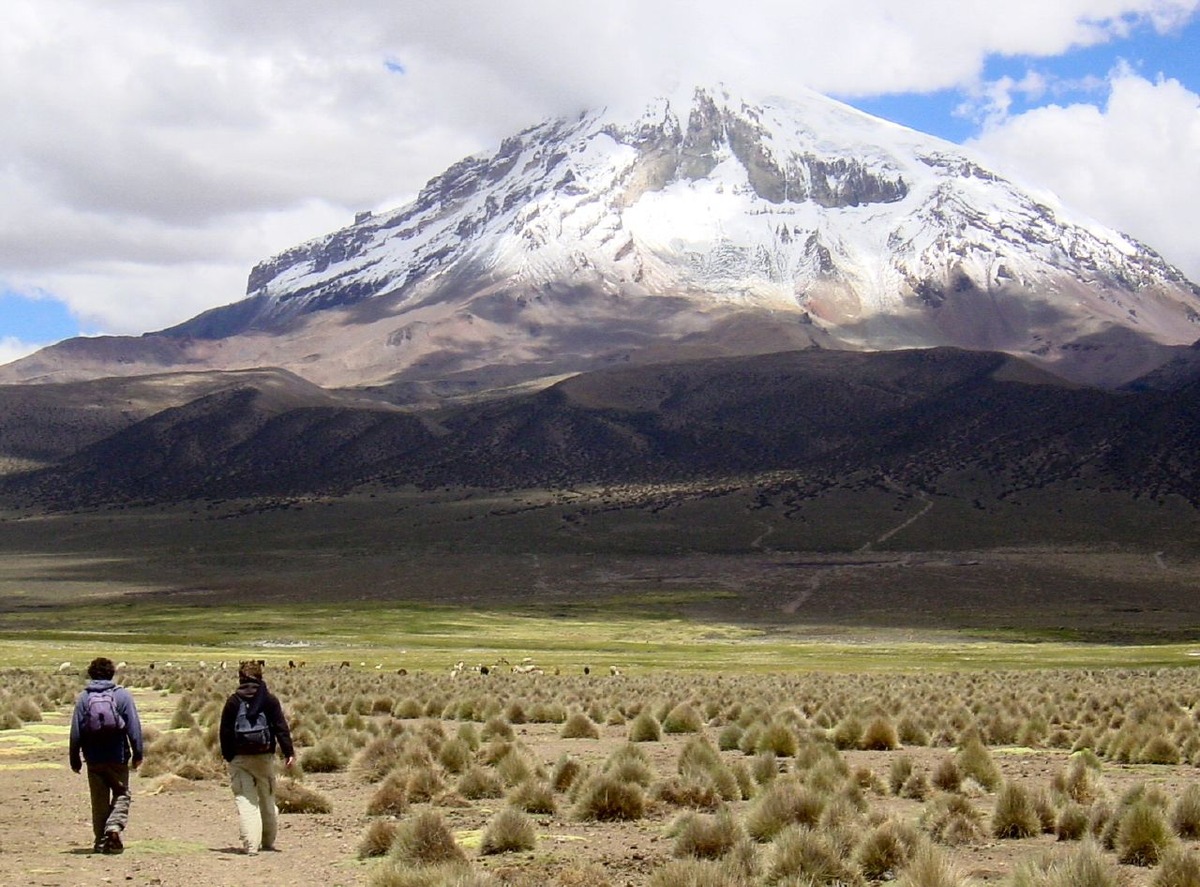
Archaeological wonders
Tiwanaku
La Paz
Capital of the precursor of the Inca Empire, developed in 300 – 1000 AD. Ancient pilgrimage center of high spiritual importance. Remnants of monumental, megalithic stone architecture with carved sculptures. Near Tiwanaku is Puma Punku – a site that contains amazing stone “details” – giant stones carved in complex forms, up to 131 tons heavy.
Samaipata
Santa Cruz (Bolivia)
The ceremonial center of Mojocoya and Inca people, located on the top of the mountain. Includes the largest known sculpted rock in the world – a 250 m long, 60 m wide, horizontal area covered with carvings in sandstone. Constructed in the 3rd – 16th centuries.
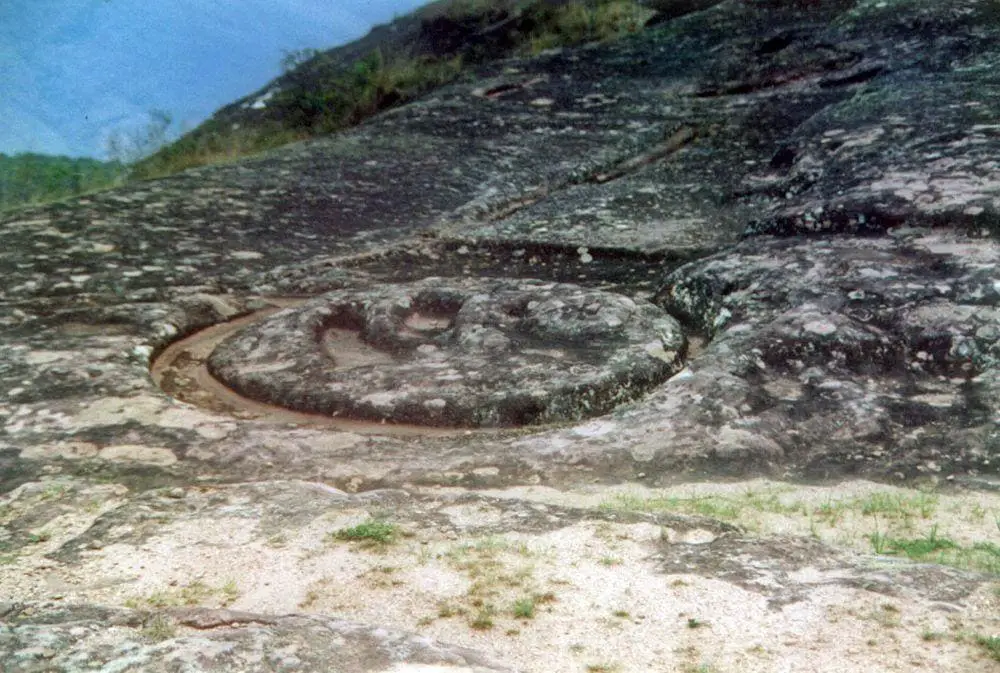
Sajama Lines
Oruro
Many thousands of lines cut in the ground for thousands of years and forming a web-like pattern. Lines cover 22,525 km² large area.
Iskanwaya
La Paz
A Bolivian “Machu Picchu” – a ceremonial center and settlement in a dramatic mountain setting, developed since approximately 800 BC and rebuilt in its current form in 1145 – 1425 AD. Now ruins of several hundred buildings remain.
Chusaqueri
Oruro
A prehispanic necropolis with chullpas – burial towers. Several burial towers have preserved their polychrome painting.
Architecture wonders of Bolivia
Potosí
Potosí
A historical mining city next to the largest silver mine in the world. Located at 4,090 m in height. In the 17th century was one of the largest and richest cities in the world, and numerous very ornate and interesting structures were built in the city at this time.
San Lorenzo de Carangas Church
Potosí
An ornate church, constructed in 1548 – the 18th century. Notable is the sumptuous ornamentation of the portal.
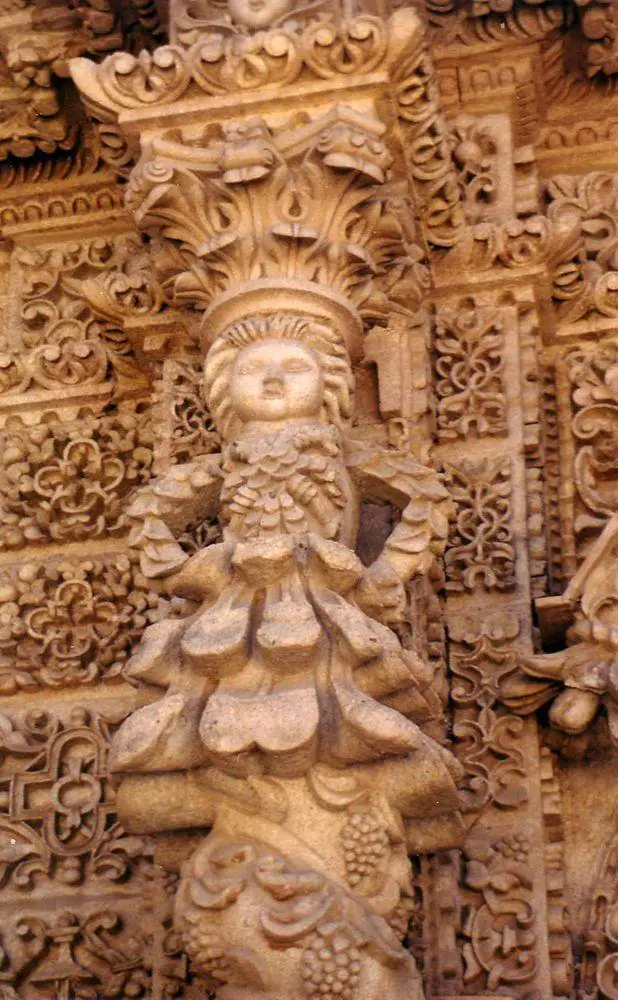
San Rafael de Velasco Jesuit Mission
Santa Cruz
This Jesuit mission was established in 1721. One of the most beautiful wooden churches worldwide, meticulously restored and well maintained. The church decoration is a unique fusion of European and indigenous arts, performed with sophisticated taste.
Sucre
Chuquisaca
A well preserved historic city with numerous buildings from the 18th and 19th centuries. Here started the South American independence movement.
San Miguel de Velasco Jesuit Mission
Santa Cruz
Well preserved and ornate church with a massive belltower.
Basilica of Our Lady of Copacabana
La Paz
A large and visually impressive shrine, built in Renaissance style in 1550 in the site of Inca cult site. Rebuilt in 1610 and 1651, plundered during the independence wars but still very impressive and interesting.
San José de Chiquitos Jesuit Mission
La Paz
This mission was founded in 1696. The church and other buildings of this Jesuit mission are built of stone and represent a unique adaptation of Baroque architecture. Church built in 1747, the bell tower in 1748, ossuary in 1750, collegy and workshops – in 1754.
Casa de la Libertad
Chuquisaca
This Jesuit college building was constructed in 1621. This building has huge symbolic importance for Bolivia – here was proclaimed the independence of the republic.
Santa Barbara Church, Sucre
Chuquisaca
The only church in Bolivia in Renaissance style. The interior is much later, in Neo-Gothic style from 1887.
San Ignacio de Velasco Jesuit Mission
Santa Cruz
This Jesuit mission was established in 1748. The church is beautiful, richly ornamented, and well maintained.
San Francisco Xavier Jesuit Mission (San Javier)
Santa Cruz
Small village – former Jesuit mission, founded in 1691, developed in its current site in 1708. The richly decorated temple has been preserved and is in a good state.
Torre de la Compañía
Potosí
Visually impressive, ornate bell tower, constructed in 1707 in Baroque style.
 Recommended books
Recommended books
The Rough Guide to Bolivia
This new, fully-updated edition of The Rough Guide to Bolivia helps you discover both the big sights and the hidden gems, with expert reviews of the best places to stay, eat and drink for everyone from backpackers to five-star travelers.
Mother of God: An Extraordinary Journey into the Uncharted Tributaries of the Western Amazon
For fans of The Lost City of Z, Walking the Amazon, and Turn Right at Machu Picchu comes naturalist and explorer Paul Rosolie’s extraordinary adventure in the uncharted tributaries of the Western Amazon — a tale of discovery that vividly captures the awe, beauty, and isolation of this endangered land and presents an impassioned call to save it.

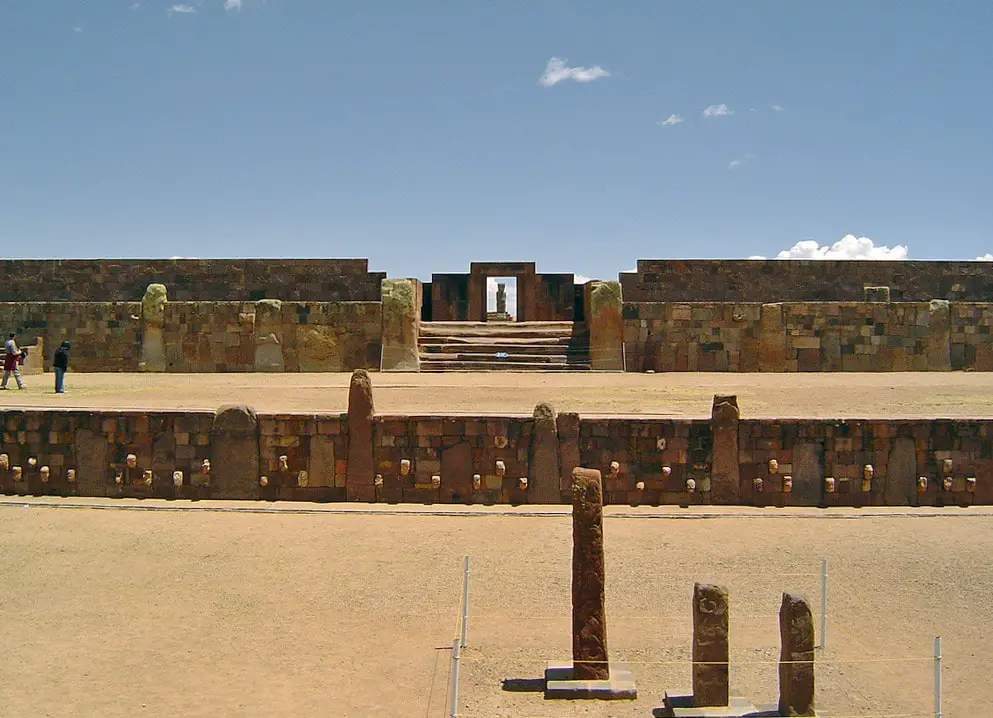
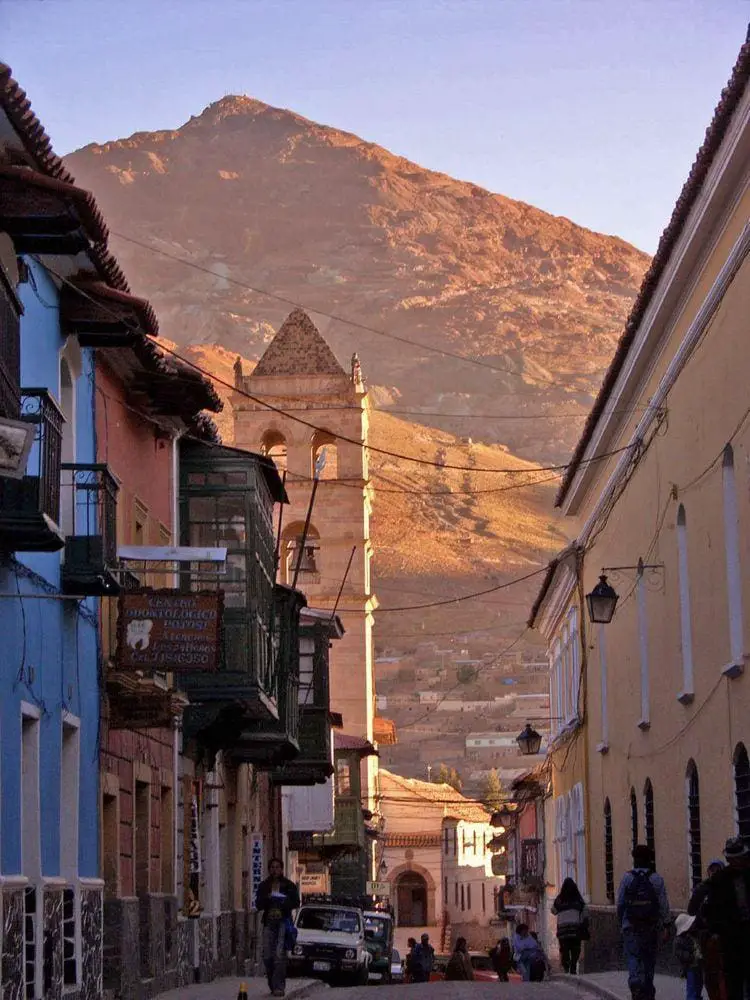


Hi Wondermomo.com,
I am writing this letter to you because I really want you to stop placing ads that have girls acting disgustingly and so that some of the ads won’t hurt other peoples feelings.
Thank you for listening and with kind regards,
Mithush
Thanks for remark! I am contacting my manager of ads to see what could be done about this! I myself have never seen such ads, but this can be different in other countries. Sorry about unpleasant experience!
Please, if you happen to see such ads again, send me a screenshot – thus we will be able to find out which advertiser has placed such ad.
:O I love the information! It really helps me with my school project! 😀
This info really helps me with my school project! Thanks!
Thanks for appreciating my work!!!